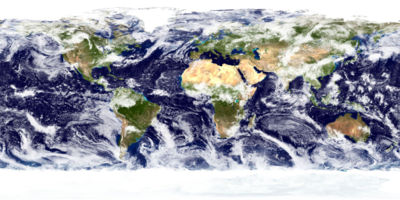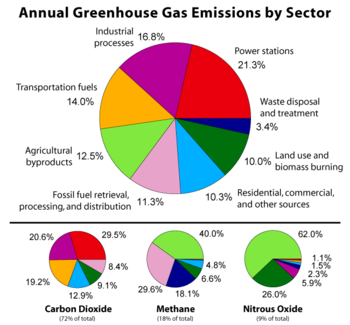- Air Homepage
- Global Warming
- Global Energy Balance
Global energy balance: What You Need to Know about Climate Control
What is the process of global energy balance? We don't have to worry about the energy flow into and out of our ecosystem unless the temperature changes. In other words, when heat energy balances, were okay.
Find more about the environment.
Understanding the global energy balance: Thermostat of Earth - Did you know that our whole planet runs on a delicate natural thermostat that balances the sun's energy perfectly? Discover how invisible greenhouse gases like carbon dioxide are slowly overheating the whole planet by learning how the Global Energy Balance works.
Do you care about environmental science, climate change, and the Earth's energy balance for maintaining the Earth's climate. If so, take a look:
- An in-depth look at how this energy balance regulates the Earth's temperature.
- Because climate change is a hot issue, you might find it relevant to your discussions.
- Explanation of how greenhouse gases work and how they keep the planet habitable.
- The delicate balance that has existed on Earth for millions of years and the role of equilibrium in global energy balance.
- The greenhouse effect and the percentages of different gases in the atmosphere.
It's kind of important to us.
Climate is maintained by the global energy balance, which regulates the temperature of the atmosphere. The greenhouse effect keeps the Earth within a stable temperature range.
Gases in the atmosphere, like carbon dioxide and methane, trap heat and keep it from escaping. Burning fossil fuels and cutting down forests releases more gases into the atmosphere, making the global energy balance unbalanced.
To deal with the effects of climate change, it would help if we were to understand and manage the global energy balance. At all times, the input from the sun equals the heat lost to outer space. That's never the case, not perfectly.
Does the earth's atmosphere have an unbalanced temperature?
In the last quarter-century, we've noticed a net upward temperature change on earth called global warming. It looks like we've lost our global energy balance. Due to the solar energy received from the sun outweighing the radiative output of the earth-atmosphere system, the temperature has risen slowly.
Equilibrium is when we have a global energy balance. When the total incoming energy equals the total outgoing energy, equilibrium occurs.
That's good, right? Is that normal? There's global warming when the incoming energy from solar radiation exceeds the outgoing energy. It's out of balance.
This imbalance has been attributed to changes in the atmosphere, which prevent long-wave radiation from escaping from land and water surfaces. Heat builds up over time and manifests as a temperature increase. It's called the greenhouse effect. By trapping heat, the atmosphere warms the planet and makes it hospitable for life. Earth would be a lot colder and less habitable without this effect.
The earth has been in balance with its energy for millions of years. Despite times when global temperatures have been much higher or lower, there hasn't been any lasting change in the average temperature of the earth. Eventually, the system gets back to a reasonable energy balance.
How does incoming solar energy usually get used? About 30% of the heat is reflected off the earth and atmosphere. We immediately lose 26% of our energy from the air and clouds, and 4% from land and water. For a while, the other 70% is ours.
But it all leaves sooner or later. At this point, it's 6% from the ground (and ocean) and 64% from the atmosphere.
How do Greenhouse Gases Affect the Global Energy Balance?
The gases tweak this delicate balance a little bit by their mere presence. Enough to make a difference. Our terrestrial surface is kept warm by these gases.
During a lunar night, the moon's surface drops to -171°C. Without the greenhouse effect, it would happen on earth too.
How do we keep our energy balance with the most powerful greenhouse gas? Water vapour. Up to 70% of the blanketing around the world comes from it. Water vapour traps the sun's heat and keeps the Earth warm. Life on Earth depends on the greenhouse effect.
It keeps the planet's temperature stable and moderates hot and cold extremes. And again, our planet would be much colder without this blanket of water vapour.
At less than 30%, carbon dioxide is a distant second, in spite of all the headlines. Methane and nitrous oxide make up most the rest, about 16%. We also have trace amounts of fluorinated gases, like hydrofluorocarbons (HFCs), perfluorocarbons (PFCs), and sulfur hexafluoride (SF6). Even though there are less of them, they have more global warming potential per kg.
What's up with all the variability? There are places where the amount of water vapor changes drastically from day to day. The amount of other gases in the earth's atmosphere stay pretty constant.
There's 99% nitrogen and oxygen in the atmosphere. Apparently, they don't contribute to the greenhouse effect and don't affect the energy balance the way GHGs do.
This is a fragile world we live in. Or is it? Go back from Global Energy Balance to the
Solution Global Warming webpage.
Search this site for more information now.
You might see special results at the top of the page, above the word WEB. They're ads, but they might be important to you. Happy searching!
What is your understanding of the global energy balance?
A global warning has been issued. As a result, the global energy balance that has been under nature's control for centuries has recently become a serious mystery. What does this mean?
Do you have concerns about air pollution in your area??
Perhaps modelling air pollution will provide the answers to your question.
That is what I do on a full-time basis. Find out if it is necessary for your project.
Have your Say...
on the StuffintheAir facebook page
Other topics listed in these guides:
The Stuff-in-the-Air Site Map
And,
Thank you to my research and writing assistants, ChatGPT and WordTune, as well as Wombo and others for the images.
OpenAI's large-scale language generation model (and others provided by Google and Meta), helped generate this text. As soon as draft language is generated, the author reviews, edits, and revises it to their own liking and is responsible for the content.





New! Comments
Do you like what you see here? Please let us know in the box below.